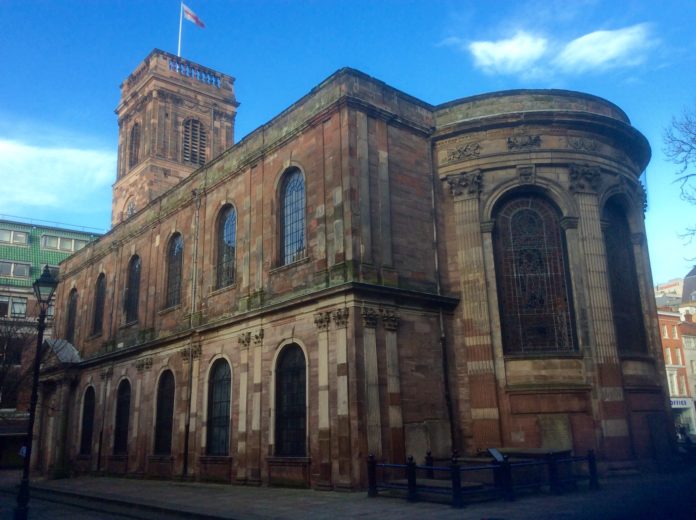When the lock down ends and you once more wonder through St Ann’s Square, take a moment to look up at the magnificent church and stop and notice the colour of its stone.
You will see that it has a red and purplish hue and the reason for that is when it was built at the turn of the eighteenth century, the stone was brought a short distance, floated down the River Irk from a quarry in Collyhurst.
Sandstone is one of the bedrocks of the region, along with coal, it has defined much of the area.
Leland wrote about it n his visit to the town in 1538 when he mentions “a goodly sandstone quarry hard by the town at Collyhurst, red sandstone, the hanging bridge made from it.” and William Camden later that century described the Sandstone industry in Collyhurst as having Noble and Famous quarries.
The fine to medium grained sedimentary sandstone rock dates from the early Permian age and was laid down around 280 million years ago, as Manchester lay in the low altitude desert belts just north of the equator.
The sands of the desert were blown into dune formations and laid low until the Mancunians needed rocks to build their town.
The Romans used it when they built their first fortifications where the Irwell and the Medlock met in modern day Castlefield.
You can see it in other places if you look carefully, around Hanging Ditch and Chethams School of Music as well as Manchester Cathedral’s Angel Stone.
The sandstone may have been easily transported but its durability meant that it barely lasted the ravages of time in the Industrial Age.It was quickly discovered that the purplish-red Binney was not very resistant to the ravages of weathering and erosion and disintegrated relatively quickly.
Indeed much of the original stone in St Ann’s has been replaced by a mixture of replacement sandstone from pale brown from Parbold in Lancashire, pinkish from Hollington in Staffordshire, yellow-grey from Darley Dale, and dark red from Runcorn.
More recent repairs have also added St Bees sandstone and Kerridge sandstone from Macclesfield. Accordingly, St Ann’s is now an extraordinary mosaic of sandstones from the North and the Midlands.
The quarries in Collyhurst have long since been filled in but the rock is remembered in the name given to the Park that covers the area.It is called….Sandhills







